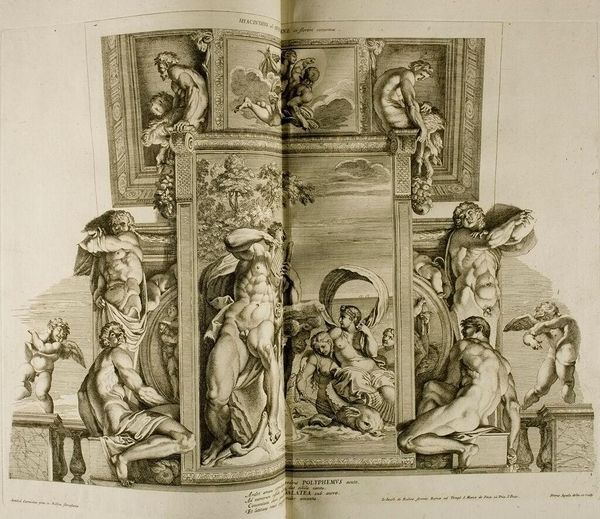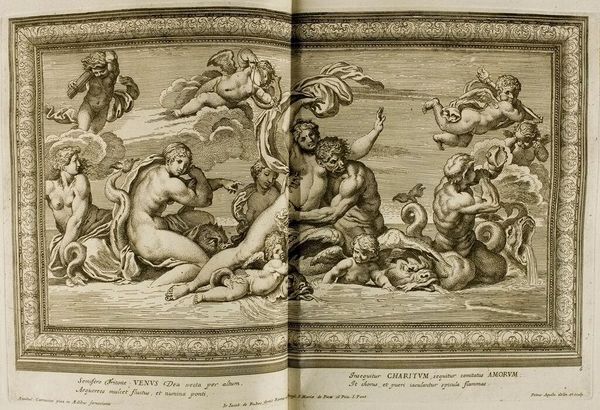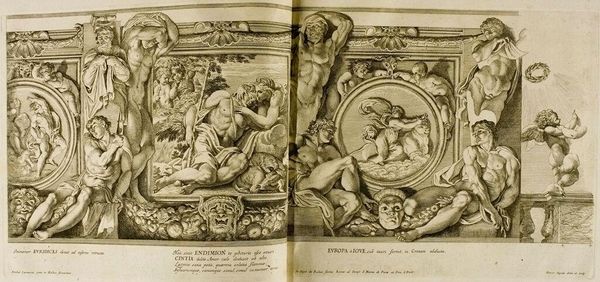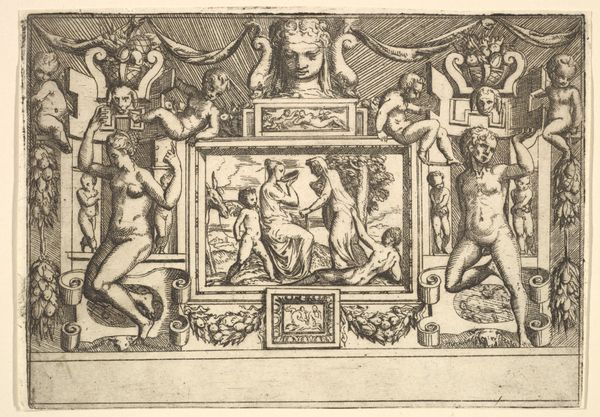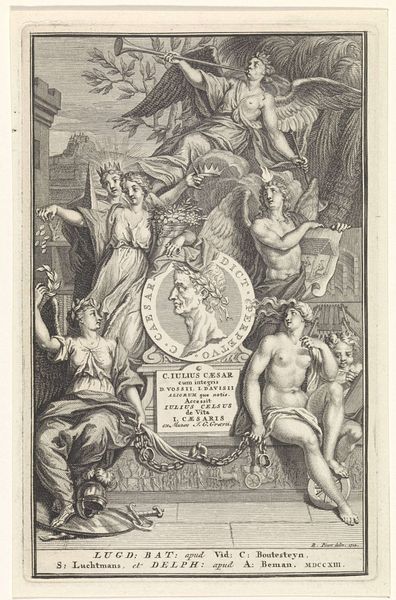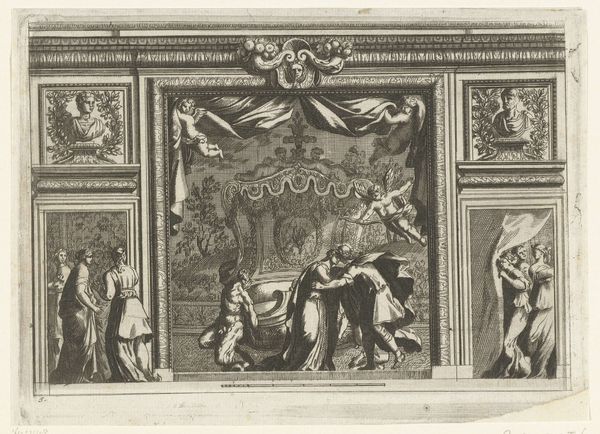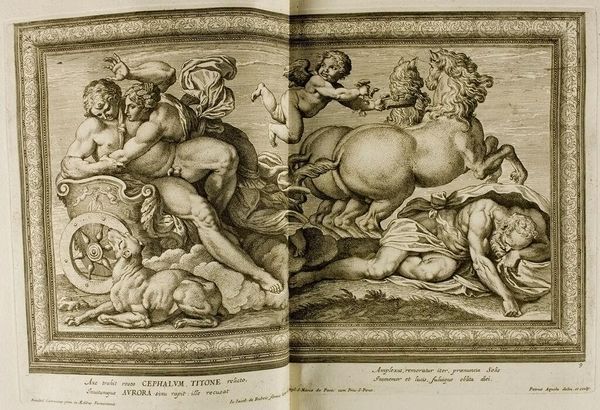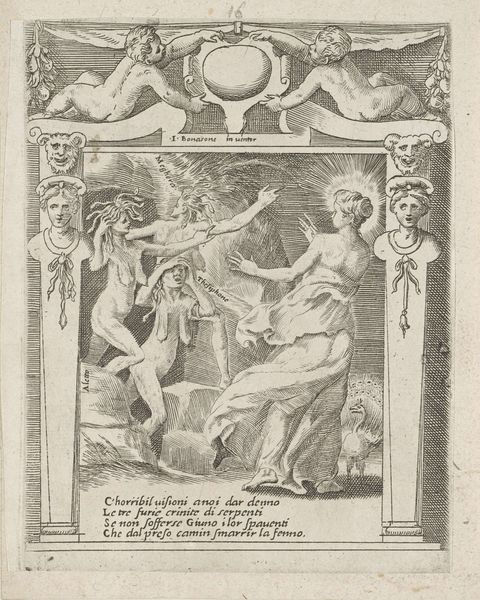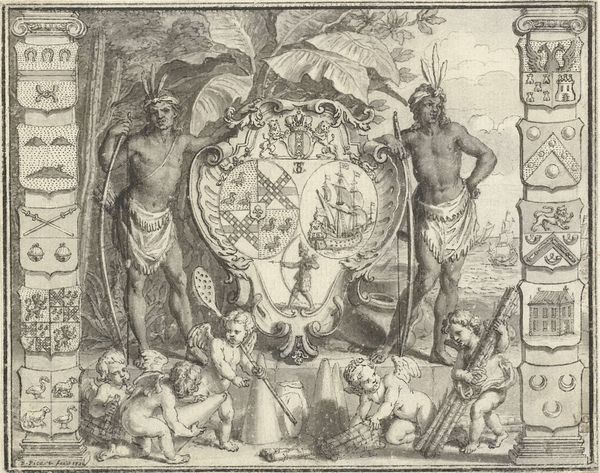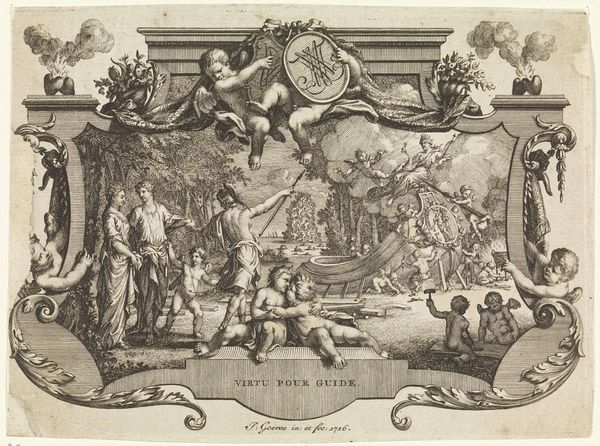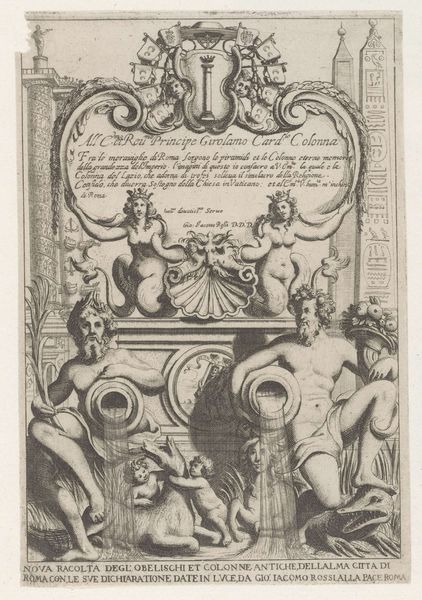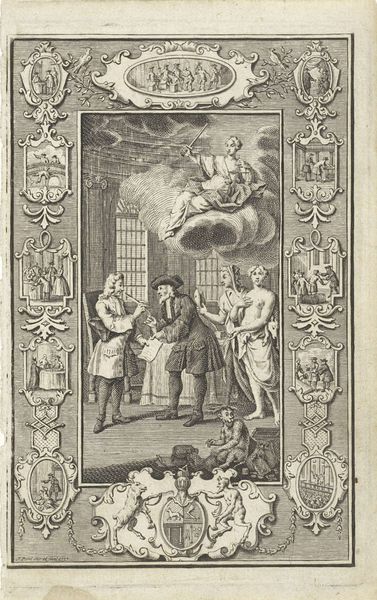
Copyright: CC0 1.0
Curator: Pietro Aquila created this engraving, titled "Galeriae Farnesianae: Polyphemus and Acis," sometime between 1650 and 1700. The work is currently held at the Harvard Art Museums. Editor: It feels like a stage set. The figures are theatrical, posed within frames, creating a sense of depth and artifice. Curator: Indeed, Aquila meticulously documented the Farnese Gallery's frescoes. His printmaking captures not just the images but the whole environment of the gallery itself. We have to ask about the consumption of images. Editor: The cyclops Polyphemus looms large, a symbol of raw, untamed passion. Acis and Galatea represent beauty and innocence threatened by this brute force. Notice the cupids; even love is menaced. Curator: Think about the economics of printmaking at the time, the labour involved in replicating these grand frescoes. It democratizes access, turning high art into a commodity. Editor: Perhaps, but the enduring power of these classical myths speaks to something deeper than mere consumption. The themes of love, loss, and transformation resonate across centuries. Curator: Agreed. But the material reality—the ink, paper, and workshop—shaped the very accessibility of those themes. Editor: A compelling point. Ultimately, the print offers a bridge between the tangible and the timeless.
Comments
No comments
Be the first to comment and join the conversation on the ultimate creative platform.
